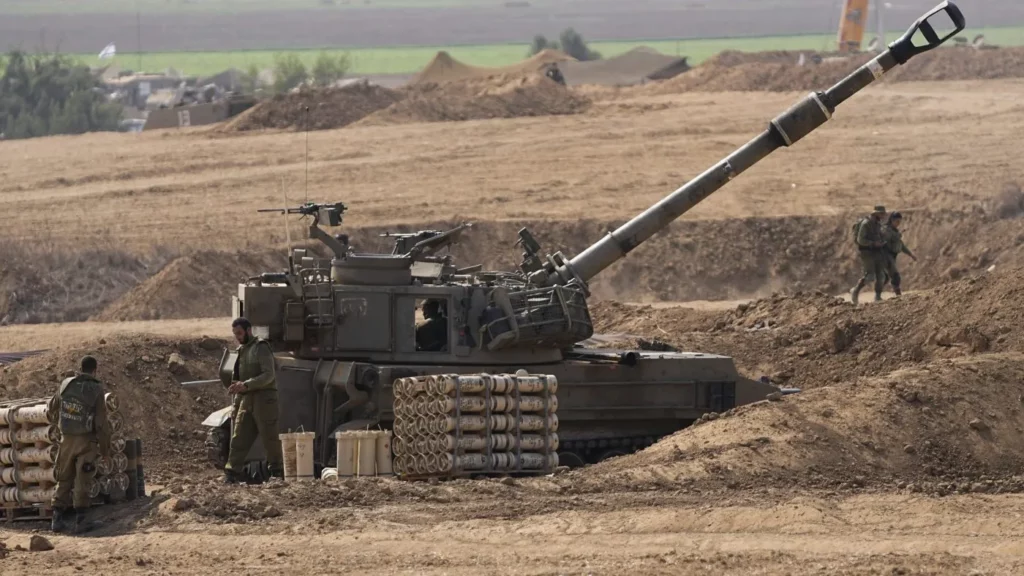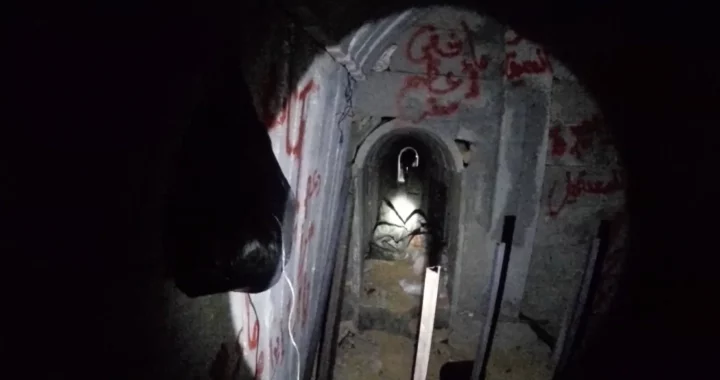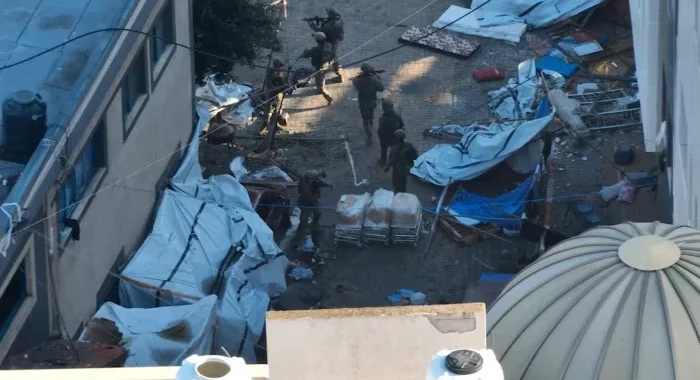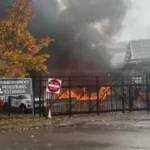Israel has initiated a significant shift in its approach within the Gaza Strip.
Israel’s Escalation in the Gaza Conflict
In the heart of the Gaza Strip, a region marred by conflict and unrest, Israel has embarked on a bold and consequential military campaign. Late on a fateful Friday evening, the Rubicon was crossed as Israel unleashed a series of intense aerial and field artillery bombardments, marking the largest military operation since the 22-day war against Hamas commenced on October 7th.
The Israeli Defense Forces (IDF) wasted no time in taking decisive action. They targeted 150 underground sites in Gaza overnight, eliminating the head of Hamas’ aerial operations. The focus of these strikes was on crucial ground targets, command and control centers, and high-value militant commanders. Simultaneously, Israel knocked out internet and phone services and engaged in heavy counterbattery fires with Hamas and Palestinian Islamic Jihadists (PIJ) who were launching rockets into central Israel.
As the dust settled from the initial strikes, Israel’s ground incursions into northern Gaza came into play. These operations seemed tailored towards intelligence gathering and condition setting. The IDF struck strategically, aiming at underground tunnels, bunkers, and munition depots. The objective was clear: gauge Hamas’s reactions, disrupt their command structures, and keep their military commanders off balance.

Crucially, the IDF revealed a disturbing aspect of this conflict – the use of human shields by Hamas. IDF spokesman Rear Adm. Daniel Hagari disclosed that Hamas had constructed underground complexes beneath Shifa, the largest hospital in the Gaza Strip. These facilities were allegedly used by Hamas leaders to direct attacks against Israel. This revelation highlighted the challenges faced by Israel in targeting military sites without harming civilians, a tactic often exploited by Hamas.
In response to Israel’s military actions, the international community found itself at a crossroads. The United Nations General Assembly voted overwhelmingly for a humanitarian truce, emphasizing the urgent need to halt the senseless war and killing. Jordanian Foreign Minister Ayman Safadi passionately declared that any nation opposing the resolution was effectively endorsing the ongoing violence, highlighting the global consensus for peace.
However, the United States and Israel stood firm in their stance, voting against the resolution. This decision, coupled with the escalating crisis in the Middle East, posed a severe challenge to President Joe Biden’s administration. Biden’s Mideast foreign policy lay in tatters. Diplomatic efforts for peace between Israel and Palestine were in jeopardy, and the Arab world was rallying against Israel, uniting in support for Hamas.
In this complex and volatile situation, the role of Iran cannot be ignored. While the immediate focus remains on Hamas, the Iranian Supreme Leader Ali Khamenei and the Islamic Revolutionary Guard Corps (IRGC) pose a strategic challenge for the United States. The Biden administration’s reluctance to confront Iran directly sends a concerning message. Iran’s hardline Foreign Minister Hossein Amirabdollahian implicitly threatened the U.S., warning that America would not be spared from the escalating tensions.
For Israel, this conflict represents more than just a military operation – it’s a fight for independence from extremism. Prime Minister Benjamin Netanyahu views this as Israel’s “second War of Independence.” A decisive victory against Hamas, and by extension, Iran, could pave the way for lasting regional peace. It is a daunting task, given the intricate network of tunnels and the challenge of minimizing civilian casualties, but it’s a battle that Israel cannot afford to lose.
The situation also places significant pressure on President Biden to recalibrate his approach. Acknowledging the gravity of the moment is crucial. Hamas, allegorically speaking, is the immediate challenge, but Iran stands as the broader strategic threat in the Middle East. Biden must communicate unequivocally with Iran, making it clear that any attacks on American forces or interests will be met with severe consequences. Moreover, any attacks orchestrated by Iranian proxies will be perceived as attacks by Iran itself.
In the midst of this crisis, the world watches as events unfold. The tides are turning globally, with anti-Israel sentiments growing and diplomatic efforts facing increasing challenges. The Rubicon has been crossed, and the choices made by leaders in the coming days and weeks will shape the future of the Middle East. It’s a pivotal moment, one that demands unwavering resolve, strategic thinking, and a commitment to lasting peace in the region.
As the world holds its breath, hoping for a resolution to the conflict, the path forward remains uncertain. The decisions made by Israel, the United States, and other key players will echo far beyond the borders of the Gaza Strip, shaping the destiny of nations and the course of history in the turbulent Middle East.
By: M Z Hossain, Editor Sky Buzz Feed















